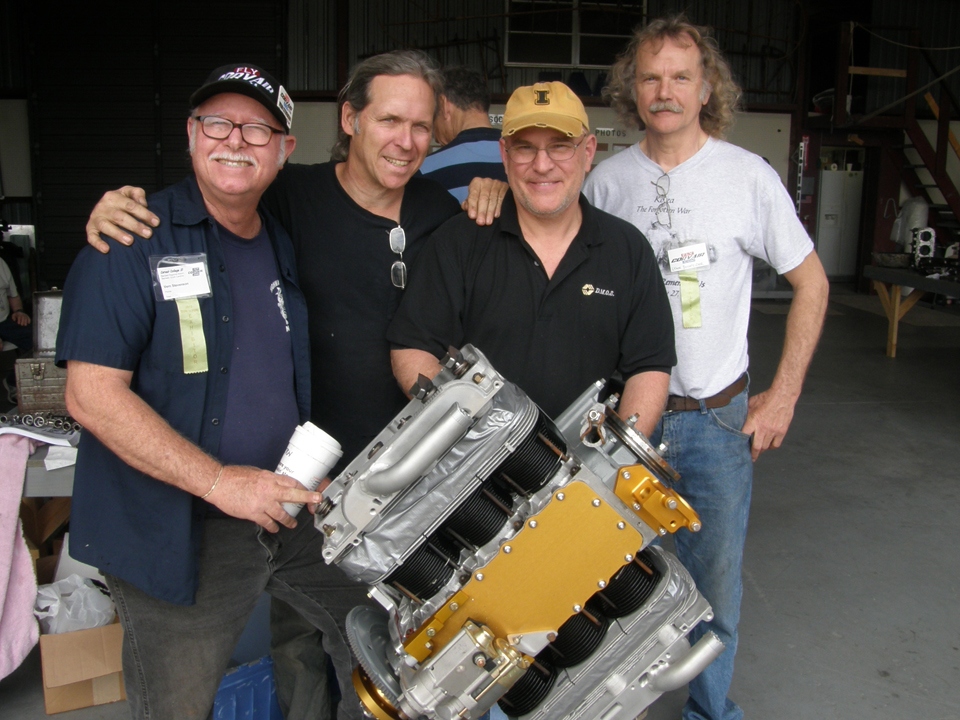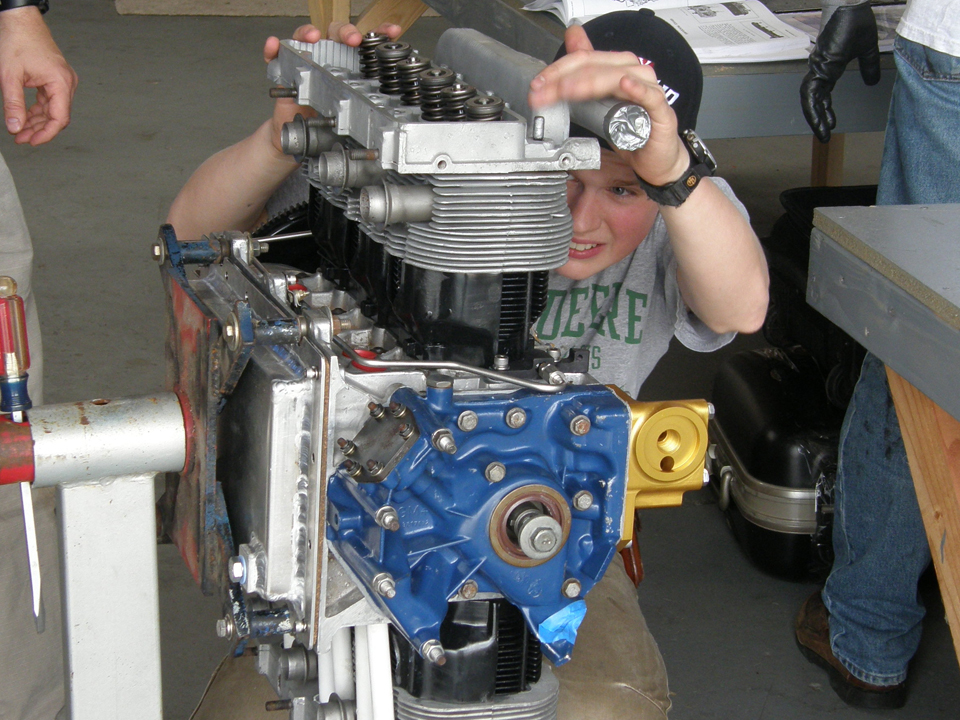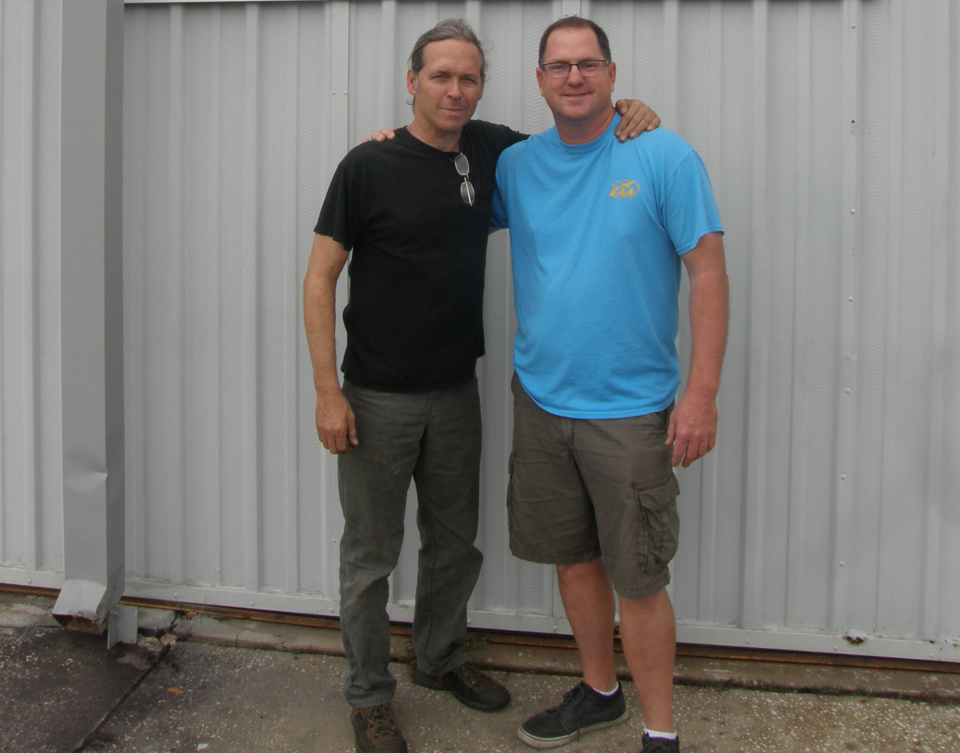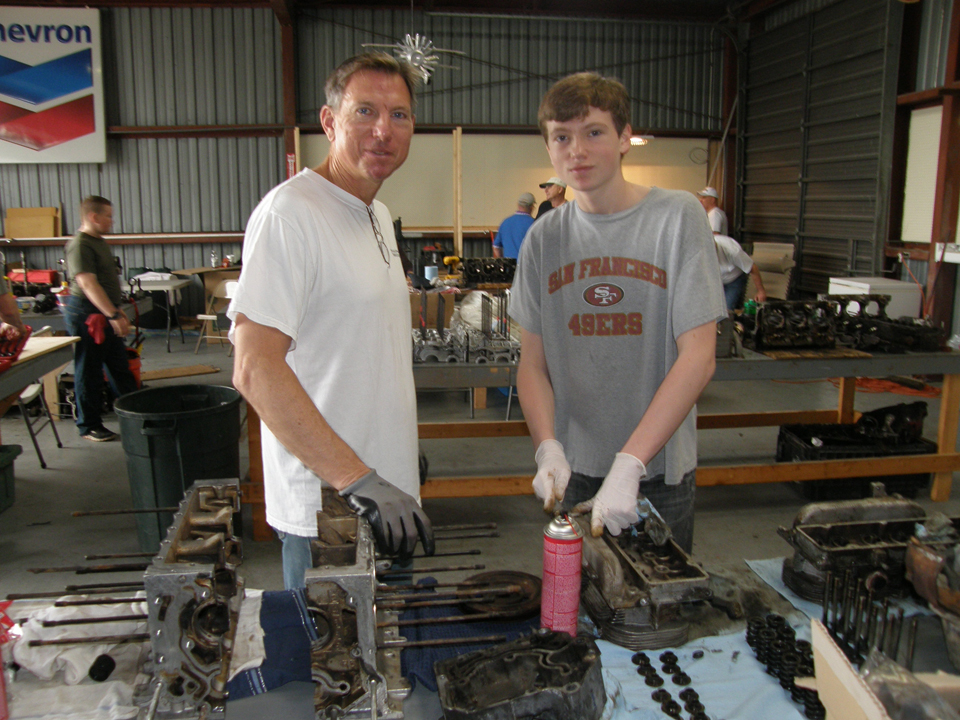EAA Chapter 534 Helps Corvair Engines Take Flight
ChapterGram Newsletter - May 2014
By Ted Luebbers, EAA 875984, EAA Chapter 534
EAA Chapter 534, based at the Leesburg International Airport in Leesburg, Florida, hosted the Corvair College workshop in its chapter hangar March 28-30. Corvair engine aficionados from all over the county attended with their engines, parts, tools, and a combined knowledge of how to convert these 1960s-built automobile engines into fine-tuned aircraft powerplants. Their ages ranged from teenagers to “grayhairs.”
The objective is to find one of these air-cooled, six-cylinder engines, then take it apart, clean it, see what parts can be salvaged, and rebuild it. Hopefully it won’t need too many new parts to become a reliable piece of machinery for powering a homebuilt airplane.
Many of these engines were probably found in old Corvairs that were discovered rusting away in a cornfield or somewhere. A lot of elbow grease and patience are needed just to disassemble a Corvair engine to find out what condition it’s in and how extensive a project you’re looking at to get it running suitable for flight again.
The instructor for the workshop was William Wynne, EAA 331351, of Orange Park, Florida, who arrived with boxes of parts and a wealth of knowledge that he passed on to his students. He is considered the Corvair engine authority by the aviation community and runs several of these workshops each year around the country. This is the second year in a row that Chapter 534 hosted the Corvair College.
This was definitely a hands-on, get-your-hands-dirty course. William could be seen moving from one table to another, helping people either take apart or put together their engine. A test stand was provided for those people who successfully completed their project so they could start it up to see and hear the results. If you’d like more information on Corvair College, visit William’s website.
It is a real pleasure to see some of these old rusty engines that have been ignored for over forty-some years turned into what looks like factory-new powerplants. Then to see and hear them run is the icing on the cake.
On Saturday, March 29, there were about 40 people working on engines, testing them, or talking about them. The EAA Chapter 534 volunteers served a hearty breakfast and cookout-style dinner for participants, then did breakfast and lunch on Sunday.
The participants were from all over the United States - from Alaska to Florida. There were several father-and-son teams who were working on engines to put into their projects. Chapter 534 also has plans to equip a Pietenpol Air Camper that members are building with a Corvair motor.




